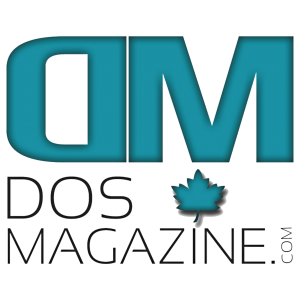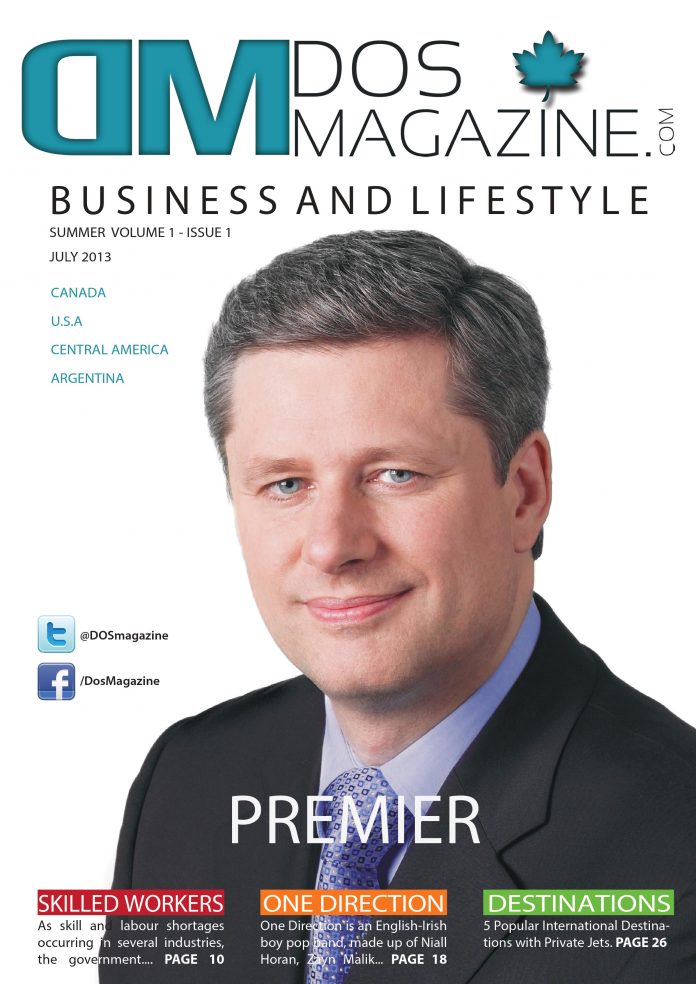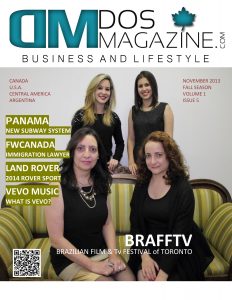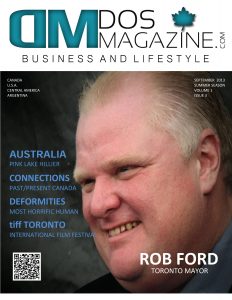ISSUE 6 * December 2013
Date of Birth 17 February 1971, Downers Grove, Illinois, USA
Birth Name Denise Lee Richards
Nickname Fluffy Girl
Height 5′ 6″ (1.68 m)
Mini Bio (1)
Denise Richards was born in Downers Grove, Illinois, the older of two daughters of Joni Lee, who owned a coffee shop, and Irv Richards, a telephone engineer. She has German, French-Canadian, Irish, English, and Welsh ancestry. She grew up in the Chicago area, until the family relocated to Oceanside, CA when Denise was 15. She began working as a model, and moved to L.A. after she graduated from high school. She landed parts in both TV and movies, and gave breakthrough performances in Starship Troopers (1997) with Casper Van Dien, Wild Things (1998) and The World Is Not Enough (1999), in which she plays a Bond Girl. She also was in Undercover Brother (2002) with Eddie Griffin and appeared in Scary Movie 3 (2003) with her now ex-husband, Charlie Sheen.
ISSUE 5 (November 2013)
Brazilian Film & Television Festival of Toronto is the largest Brazilian film festival outside of Brazil. BRAFFTV is non-profit and possible sponsors are welcome. It is produced by Southern Mirrors (Canada) and its Brazilian counterpart Puente under the umbrella of Instituto Puente with the goal of promoting Brazilian cinema.
The festival encompasses four programs: Competitive, Invited, Bra-zoo-kah (films by Brazilians living abroad), and Brazil Through Foreign Eyes (films by non-Brazilian filmmakers about Brazil).
The Competitive Program receives 270 submissions annually, and selected films compete for the Golden Maple Award in the short, medium-length, and feature film categories. The curator is responsible for selecting the films that will be screened.
An international jury elects the Best Film, Director, Actor, Actress and the Best Documentary (short, medium or feature film). The audience votes during the festival and elects the Audience´s Choice Award.
ISSUE #4: October 2013
Being a male model doesn’t mean getting a free ride to the best parties in town. It takes hard work to be a male model, as well as long hours, and sometimes, little payoff.
That being said, breaking into the modeling industry as a male is a bit easier than it is for women, because male models don’t have to meet the same rigid physical requirements all the time and can work for many years — some of them working well into their fifties. If you want to know if you’ve got what it takes to be a male model, just follow along.
Meet the industry standards. Though male models have a bit more flexibility in terms of their looks than female models, there are still some general standards that you should meet if you want to be a male model. But if you don’t meet all of these standards, don’t be too discouraged; if you’ve really got “the look,” then you may be able to find work even if you’re below the average height or above the average weight for male models. Here are some points to consider as you decide whether or not you should get in to male modeling:
Industry standards are between 5’11” and 6’2” in height.
Unlike female models, who are mostly out of work by the age of 25, male models can find work well into their 50s.
Men from 15 to 25 make up the “young men’s” market.
Men from 25 to 35 are the “adult men’s” market.
A typical weight for men is between 140 and 165, but this will depend on your Body Mass Index.
Average measurements are 40 regular to 42 long.
Typically, the modeling industry doesn’t go for overly hairy men in the chest and arm region. Be prepared to do some waxing before you pursue your career.
ISSUE No.3: September 2013
Born on May 28, 1969, in Etobicoke, Toronto-Canada, Rob Ford headed into the political arena in 2000 as the councilman for his local ward. Despite ongoing incidents involving inebriation, Ford was elected Toronto’s mayor in October 2010 with support from the area’s outer suburbs. His true undoing began in 2013, when reports surfaced that Ford had been secretly recorded smoking crack cocaine. That scandal, among others, eventually led to Ford being stripped of his mayoral powers and taking a leave of absence. He finished a two-month stint in rehab but was later diagnosed with a rare form of cancer. He died on March 22, 2016, at the age of 46.
Rob Ford was born in Etobicoke, Toronto, Canada, on May 28, 1969. He attended Ottawa’s Carleton University and York University’s Atkinson College, although he didn’t graduate from either. Ford’s father Doug Sr., who was born into severe poverty, became a parliamentarian and successful businessman who was seen as a commanding patriarchal figure in the family.
Rob Ford himself served as a principal of the family business, Deco Labels and Tags. He wed Renata Brejniak in 2000, with the two having met in high school. The couple went on to have two children.
Somehow able to overcome previous scandals, Ford’s 2010 run for Toronto mayor was almost derailed when a DUI from a decade earlier came to light. Following his pattern of deflection, Ford had lied about the incident. Nonetheless, Ford was elected the 64th mayor of Toronto in October 2010, with major support from the city’s outer suburbs. With a small-government ideology, Ford’s term was marked by the elimination of a $60 vehicle registration tax, the positioning of the TTC (the city’s subway) as a key service to prevent labor strikes and cuts in streetcar and bus routes.
By Christmas 2011, Ford was headed off the rails again, this time evidenced by a call his mother-in-law made to the police saying that the mayor was intoxicated and taking his children to Florida against the wishes of his wife.
ISSUE No.2 August 2013
OCCUPATION: 25th Premier of Ontario
BIRTH DATE: May 21, 1953 (Age: 60)
EDUCATION: Harvard University,
Queen’s University, University of Toronto
PLACE OF BIRTH: Richmond Hill, Ontario, Canada
FULL NAME: Kathleen O’Day Wynne
ZODIAC SIGN: Gemini
MILESTONE: She is the rst premier in Canada to
be openly gay and the rst female premier of
Ontario.
Kathleen Wynne was elected Leader of the Ontario Liberal Party on January 26, 2013. She was sworn in as the 25th Premier on February 11, 2013, becoming the rst woman
to hold the position in Ontario’s history. Kathleen has demonstrated leadership, energy, and an ability to bring opposing sides to the table to nd real, creative solutions
to complex challenges. Wynne’s mother was a British subject who grew up in the
Bahamas before immigrating to Canada. Wynne grew up in Richmond Hill, Ontario in Canada.
She earned a Bachelor of Arts degree at Queen’s University and a Master of Arts degree in linguistics from the University of Toronto. She achieved a Master of Education degree
in adult education from the Ontario Institute for Studies in Education (University of Toronto). She has also completed a one-week course in mediation training at Harvard University. She was a member of the discipline committee of the Ontario Society of Psychotherapists from 1997 to 2000.
Wynne served as president of the Toronto Institute of Human Relations. In 1996, she helped found Citizens for Local Democracy, which opposed the eorts of Ontario’s
Progressive Conservative government to amalgamate the City of Toronto.
She also founded the Metro Parent Network (now the Toronto Parent Network) which supports improvements in the province’s public education system, and has participated
in numerous other community endeavours. Wynne helped found MAD for Dancing, a community fundraising group that has donated over $50,000 to organizations
that support gay and lesbian youth. Prior to her coming out at age 37 she was married to her husband Phil Cowperthwaite, with whom she had three children (Chris,
Jessie and Maggie, and two granddaughters, Olivia and Claire).
Bringing people together and nding common ground is what Kathleen’s whole public life has been about – as a School Trustee, and as a board member of grassroots community
organizations such as the Fairlawn Avenue United Church and the Senior Peoples Resources in North Toronto. As a conict mediation practitioner, Kathleen ran a small
business for 10 years and has taught mediation in schools across Ontario. Kathleen holds Master’s degrees in Linguistics and in adult education respectively from the University
of Toronto and the Ontario Institute for Studies in Education (OISE). She has also completed mediation training at Harvard University, and used her mediation skills and
experience to implement conict mediation programs in over 60 schools across the province in the 1990s. Kathleen is a committed community volunteer, having taught
English as a Second Language, and provided mediation services to several community organizations.
As Minister of Education in the McGuinty Government, Kathleen worked closely with our education partners to improve Ontario schools and give our children the best
possible start – full-day kindergarten, smaller class sizes, increased graduation rates, and increased test scores. As Minister of Transportation, Kathleen created jobs and boosted the economy by overseeing one of the largest transit and infrastructure expansions in Ontario history, including the Highway 407 East Extension and the Windsor- Essex Parkway. Kathleen put in place the basis for a more ecient transportation grid to tackle gridlock,
including major transit expansion in the Greater Toronto and Hamilton Area.
After the Eglinton-Scarborough LRT was put at risk, Kathleen brought together the Mayor of Toronto, Metrolinx, and the TTC to ensure its construction – saving the $8.4 billion transit investment. That same year, Kathleen introduced the new Ontario Photo Card, providing government I.D. to 1.5 million Ontarians who either don’t drive or can’t
drive, many of them facing health and nancial challenges. As the Minister of Municipal Aairs and Housing, Kathleen nalized a new funding agreement with the federal government to improve access to aordable housing and provided province-wide social assistance support. Last June, Kathleen worked with the NDP to pass Bill 19,
making life more aordable for over 1 million Ontario tenants by capping rent increases. As Minister of Aboriginal Aairs, Kathleen worked in partnership with First Nations communities, addressing issues such as mining development and First Nations land claims, and improving quality of life for aboriginals living o-reserve through aordable housing and recreation programs.
She is a member of the United Church of Canada, Kathleen
and her partner Jane have lived in North Toronto for more
than twenty-ve years.
To the rst print issue of DOSmagazine. We are proud to bring you an exciting new publication full of interesting on business and lifestyle from many cities.
As summer creeps upon us, this month, we have some great seasonal.
In DOSmagazine print, online, radio, app, we hope to have something for everyone in the
family, even our pets! Until next month, where they look more current information in our 35,000 print magazines around the world.
If you would like to advertise or write a feature in our next edition, please get in touch with us by using the contact details below: mail@DOSmagazine.com
Enjoy our rst issue of DOSmagazine, feedback on the first issue is essential, so we want to hear your thoughts!
Nancy Wilson
PUBLISHER
nancy@DOSmagazine.com
ISSUE NUMBER ONE (PREMIER) July 2013
Stephen Harper
OCCUPATION: Prime Minister of Canada
BIRTH DATE: April 30, 1959 (Age: 54)
EDUCATION: University of Calgary
PLACE OF BIRTH: Toronto, Canada
FULL NAME: Stephen Joseph Harper
ZODIAC SIGN: Taurus
HEIGHT: 6′ 2″ (1.88 m)
TRADE MARK: When making informal public
visits, often wears no necktie with shirt and keeps
jacket on during speech, with eyeglasses.
Stephen Harper is a Conservative Party Canadian politician who became Prime Minister after his party won a minority government in the 2006 federal election. Born Stephen Joseph Harper, April 30, 1959, in Toronto, Ontario, Canada; son of Joseph and Margaret (Johnston) Harper; married Laureen Teskey, December 11, 1993; children: Ben, Rachel. Education: Attended University of Toronto; University of Calgary, B.A., 1985, M.A., 1991.
Mr.Harper is the current, and 22nd Prime Minister of Canada. He is a member of the Conservative Party. He was elected in February 2006 and replaced Paul Martin. He has been the Prime Minister of Canada ever since. He lived in Calgary, Alberta. He is married to Laureen Teskey and has two children. He is the third Prime Minister, after Pierre Trudeau and John Turner, to send their children to Rockclie Park Public School, in
Ottawa.
Stephen Harper is currently in his 6th year as prime minister of Canada, hosted both the Vancouver 2010 Olympics and Paralympic Winter Games. Harper also hosted the G8 and G20 meetings. A Toronto native, Harper was graduated rst in his class from his high school in Etobicoke, a part of the Toronto metropolitan area. He entered the University of Toronto, but at the age of 19 headed west to take a job as a computer pro- grammer in the oil and gas industry in Edmonton, Alberta. Two years later, he moved on to Calgary for a similar job, and also enrolled at the University of Calgary, where he earned an undergraduate degree in economics in 1985 and a master’s degree six years later.
Harper became active in Progressive Conservative (PC) Party politics during his time in Calgary, and was a hired as a legislative assistant to one of Calgary’s representatives in the Canadian House of Commons following his graduation in 1985. Leaving the PC Party
along with several other members, he became one of founders of the Reform Party (RP) of Canada in 1987, and served as its rst chief policy ocer. Cobbled together out of pro-business advocates and Canadian Plains province leaders uneasy with the longstanding
traditional nexus of power that ruled the country from Ontario and Quebec’s urban centers, the Reform Party was populist, conservative, and determined to assert Plains-province interests on the national political stage. Harper reportedly coined the RP’s rst
slogan, “The West Wants In!”
DOSMAGAZINE.COM| page 23 (hard copy)
Harper ran for a seat in the Canadian House of Commons in 1988, but lost to the PC incumbent from the Calgary West district, who was also his former boss when he worked as the legislative assistant. He eventually fell out with RP leader Preston Manning over
the party’s direction regarding a 1992 referendum on constitutional amendments that would have rearranged the division of powers between Canada’s federal and provincial governments. He resigned as the RP’s chief policy advisor in October of 1992, but a
year later won the Calgary West seat in Ottawa as one of 52 newly elected RP legislators in a stunning electoral victory for the party that year. Emerging as one of the most quotable new legislators of the pack, he continued to publicly assert his opinions over RP
strategy and direction, which erupted into more skirmishes with the party leadership. In January of 1997, he resigned his seat in the House of Commons, and took an executive post with the National Citizens Coalition (NCC), a conservative advocacy group.
Harper became active in the Canadian Alliance, a reconstituted version of the RP, and returned to politics with a bid to become party leader during a particularly contentious battle with his main rival, Stockwell Day. He won that March of 2002 contest, and two
months later returned to the House of Commons in a by-election to ll Manning’s former seat representing Calgary Southwest. When he won that contest, he became the ocial Leader of the Opposition in parliament. A year later, he was a key gure in the union of
the Canadian Alliance with the Progressive Conservative Party to form the new Conservative Party (CP) of Canada. In January of 2004, Harper’s fellow CP members
elected him party leader, but they failed to take the lead in federal elections later that year. Their main rival was the Liberal Party, and in 2005 the Liberal government was rocked by a corruption scandal that ruined public condence in the party and the government
of Prime Minister Paul Martin, Harper’s Liberal Party counterpart. In November of 2005 Harper challenged the Martin government with a motion of no condence he introduced in the House of Commons, which passed and resulted in the dissolution of parliament
until new federal elections could be held the following January.
Harper led his party to victory in the 2006 federal elections on January 23, though the Conservative Party slate won a plurality, or largest share, but not a majority of the 308 seats in the House of Commons. Harper formed a minority government, and was sworn into oce on February 6, 2006, at the age of 46, which made him one of the youngest prime ministers in Canadian history. His rst year in oce was judged a success for the achievement of many of his campaign pledges, including passage of the Federal Accountability Act, a series of clean-government reforms that spelled out new rules for political lobbying, campaign contributions, and political patronage jobs. He also
stood rm against the United States and Bush White House over Arctic rights, but alarmed some Canadians— in a country where gun control is tightly regulated— with his plan to arm border guards.















